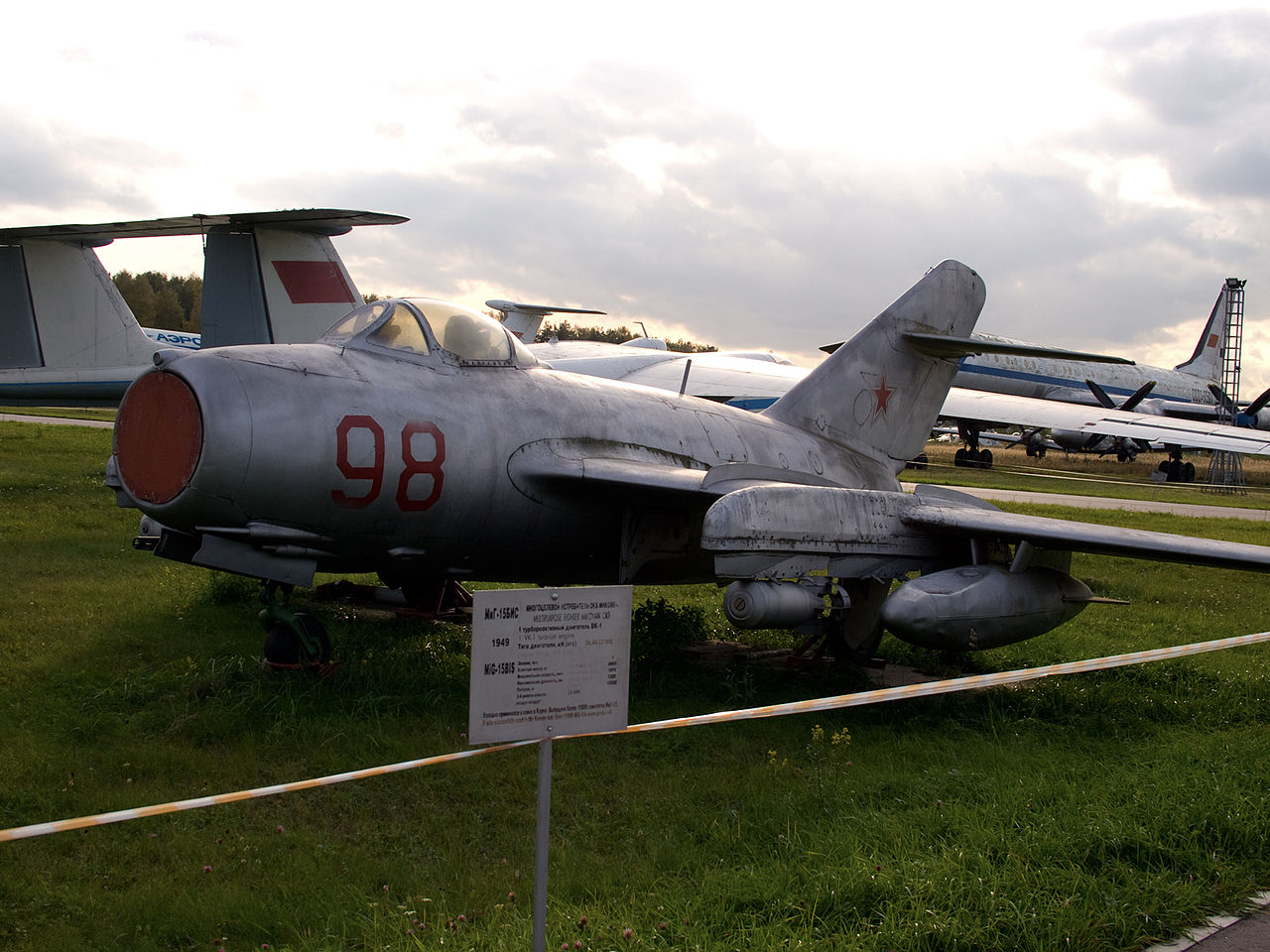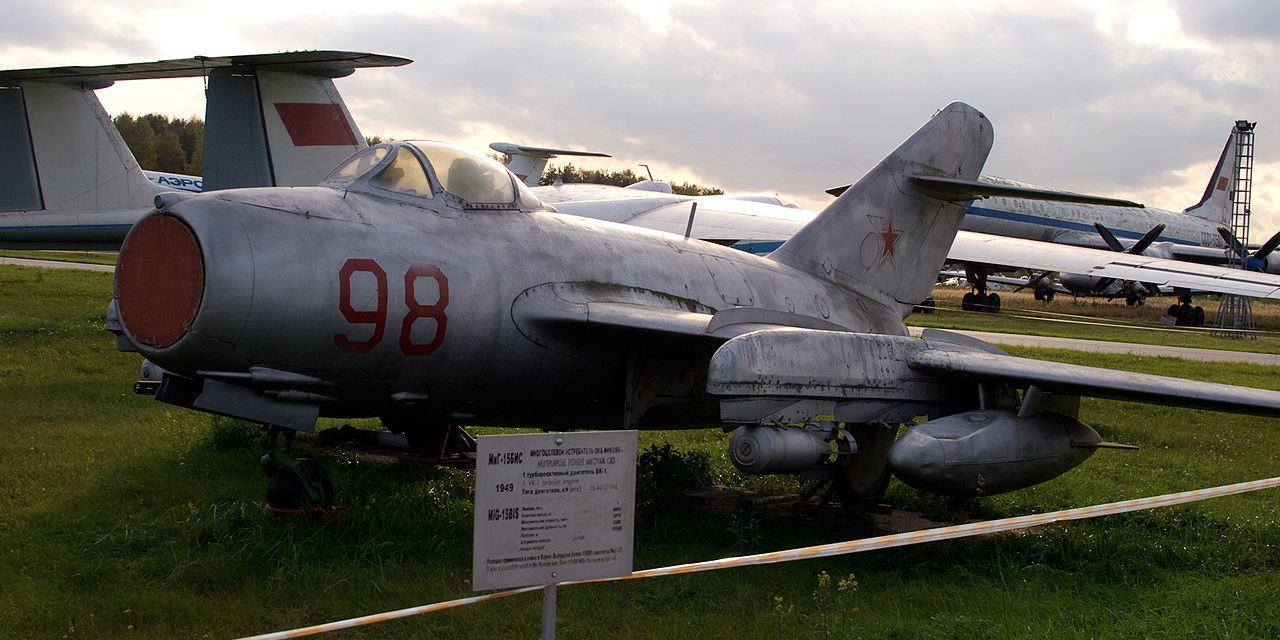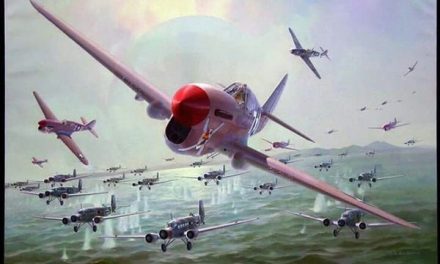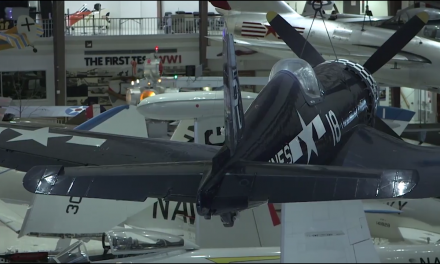
Designers at MiG’s OKB-155 started with the earlier MiG-9 jet fighter. The new fighter used Klimov’s British-derived engines, swept wings, and a tailpipe going all the way back to a swept tail. The German Me 262 was the first fighter fitted with an 18.5° wing sweep, but it was introduced merely to adjust the center of gravity of its heavy Junkers Jumo 004 pioneering axial-compressor turbojet engines. Further experience and research during World War II later established that swept wings would give better performance at transonic speeds. At the end of World War II, the Soviets seized many of the assets of Germany’s aircraft industry. The MiG team studied these plans, prototypes and documents, particularly swept-wing research and designs, even going so far as to produce a flying testbed in 1945 to check out swept-wing design concepts as the piston-engined “pusher”-layout, MiG-8 Utka (Russian for “duck”, from its tail-first canard design). The swept wing later proved to have a decisive performance advantage over straight-winged jet fighters when it was introduced into combat over Korea.
Read more at: https://en.m.wikipedia.org/wiki/Mikoyan-Gurevich_MiG-15
English: MiG-15bis on display at Monino aircraft museum.
Date 15 October 2008
Source http://www.flickr.com/photos/kpisman/2943206639/
Author Kirill Pisman





Recent Comments